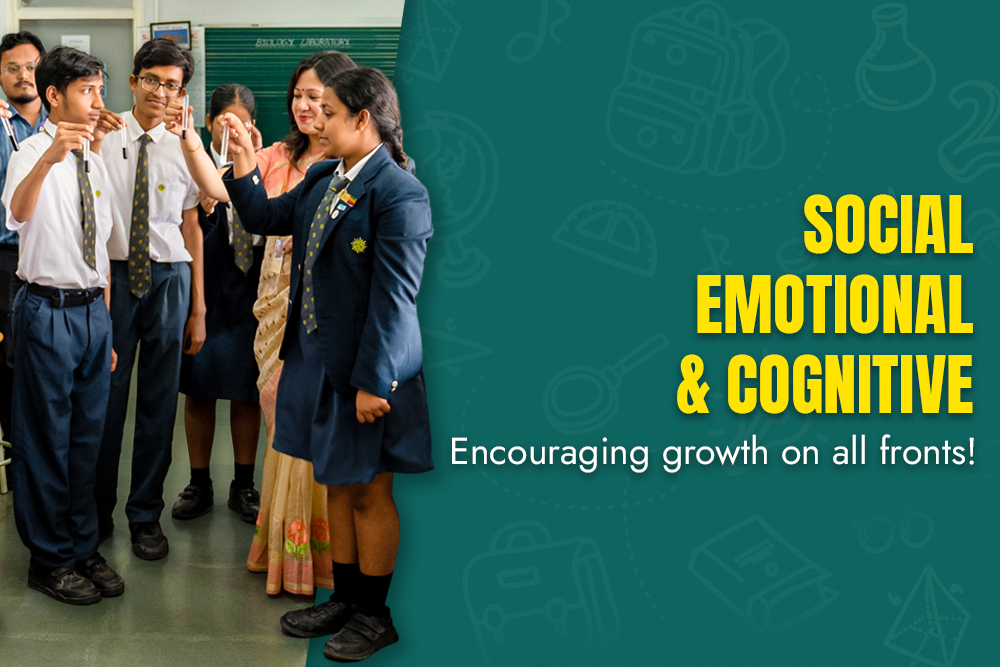South City International School

 26 Jun 2023
26 Jun 2023 Creating a positive and inclusive classroom environment has numerous benefits for children. It makes them feel safe and comfortable, which allows them to be more productive and engaged in learning.
When children feel like they are in a welcoming environment, they are more likely to participate in class discussions, ask questions, and take risks in their learning.
Benefits of creating an ideal learning environment
An inclusive classroom environment promotes diversity and understanding. It helps children develop empathy and respect for others, regardless of race, ethnicity, or socio-economic status. It also helps them understand and appreciate differences in learning styles, which can lead to a more collaborative and supportive learning environment.
A positive and inclusive classroom environment can also improve students' social and emotional well-being. When children feel valued and included, they are more likely to develop positive relationships with their peers and teachers. It can increase self-esteem and confidence and instil a sense of belonging.
Holistic education for comprehensive growth
Schools should have a blend of activities, courses and teaching methods to accommodate the needs of all learners. This includes students who are exceptionally good at academics, co-curricular activities, or both and others who take time to grasp concepts and move ahead with the curriculum.
The extra support for each student's unique requirements creates a level playing ground for everyone's development.
Strategies to promote holistic education
Some simple strategies can be used to build a welcoming classroom atmosphere that promotes holistic education:
Learning that goes beyond academics
Learning and development include not just academic excellence. It is essential to consider other factors, such as social, emotional, and physical development. Students should be encouraged to take up co-curricular activities and projects outside their curriculum. They should also be rewarded for achievements, whether in academics or other aspects of their lives.
Practice empathy
Empathy is an important aspect of a positive and inclusive classroom environment. Teachers should also create opportunities for students to practice empathy by encouraging them to understand and relate to the experiences of others. This model will also help students interact more and help develop clear communication skills. Further, when students feel safe, valued, heard and included in the classroom, they are more likely to be engaged and motivated learners.
Foster a sense of belonging
Recognising and celebrating the diversity of students can go a long way in helping students feel valued. Teachers should create opportunities where students can teach each other and collaborate on different projects to brush up their communication and problem-solving skills, brushing their strengths and working on their weaknesses.
Taking ownership
Giving students the opportunity to choose what they want to learn allows them to not only take ownership of their decisions but opens them to new experiences. This also creates excitement among students as their choices are considered and implemented. While learning something fresh, students also get to discover a skill or passion that they can further develop.
Practice self-advocacy
One of the key concepts that students need to learn is self-advocacy. Pupils must be able to express their ideas, desires and need in the classroom to learn better. This will help them further in their career as they will have already developed the skill to understand and communicate their strengths and weaknesses clearly.
South City International School: Focusing on holistic development of future-ready scholars
South City International School aims to provide an inclusive environment where students can learn and develop at their own pace. Their mission is to provide a welcoming space for students to share their ideas and thoughts and share positive and productive feedback with each other.
They have a robust curriculum and state-of-the-art facilities where students are encouraged to step outside their comfort zone and explore new fronts of growth.
 375, Prince Anwar Shah Road, Kolkata,
375, Prince Anwar Shah Road, Kolkata,  admissions@scis.co.in
admissions@scis.co.in
 info@scis.co.in
info@scis.co.in